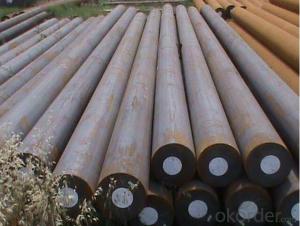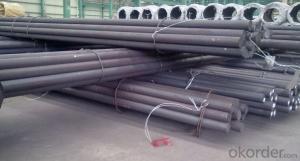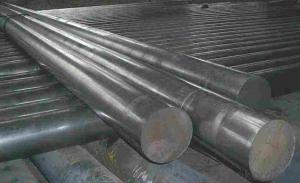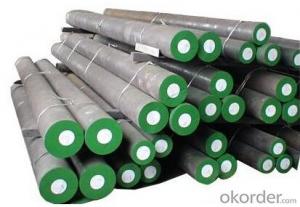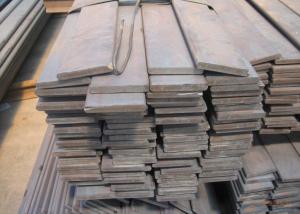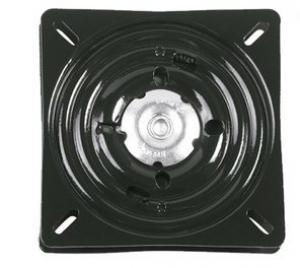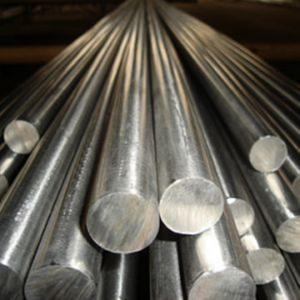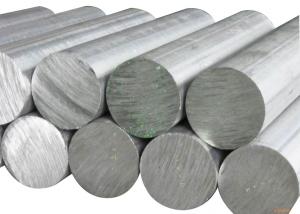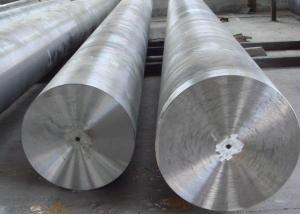Grade AISI52100/JIS52100 Bearing Steel Round Bar
- Loading Port:
- Shanghai
- Payment Terms:
- TT OR LC
- Min Order Qty:
- 30 m.t
- Supply Capability:
- 10000 m.t/month
OKorder Service Pledge
OKorder Financial Service
You Might Also Like
Item specifice
Specification of Round Bar
1, Dimention of 52100 Alloy Steel | ||||||||
Round bar | Diameter(mm) | Length (mm) | ||||||
20~800 | 3000~9000 | |||||||
Plate | Thickness(mm) | Width (mm) | Length (mm) | |||||
Max:800 | Max:2200 | Max:9000 | ||||||
The specification can be customized. | ||||||||
2, Chemical Compositions (%) | ||||||||
Grade | C | Si | Mn | P | S | Cr | Mo | Ni |
GCr15 | 0.95-1.05 | 0.15-0.35 | 0.25-0.45 | ≤0.025 | ≤0.025 | 1.40-1.65 | ≤0.10 | ≤0.30 |
E52100 | 0.93-1.05 | 0.15-0.35 | 0.25-0.45 | ≤0.025 | ≤0.015 | 1.35-1.60 | ≤0.10 | ≤0.25 |
SUJ2 | 0.95-1.10 | 0.15-0.35 | ≤0.50 | ≤0.025 | ≤0.025 | 1.30-1.60 | ≤0.08 | ≤0.25 |
100Cr6 | 0.93-1.05 | 0.15-0.35 | 0.25-0.45 | ≤0.025 | ≤0.015 | 1.35-1.60 | 0.1 |
|
3, Features of 52100 alloy steel | ||||||||
1, High carbon alloy steel | ||||||||
2, High degree of hardness | ||||||||
3, Good compressive strength and abrasion resistance | ||||||||
4, Typical Applications | ||||||||
1, Taps, gauges, swaging dies, ejector pins | ||||||||
2, Ball and roller bearings | ||||||||
3, Machine parts and for press tools | ||||||||
Our Featured Products
Alloy steel: Combination of steel / Bearing steel// Spring steel/ Cr- mo steel
GB 20Cr/ 40Cr / 42CrMo / 35CrMo/ 20CrMn/GCr15/30CrMnTi…
ASTM 5120 /5140 / 4140/ 4135/ 5152/52100…
JIS SCr420H/ SCr440/ SCM3/ SUP9/SUJ2…
Carbon steel: Carbon tool steel /Carbon Structural Steel
GB 20/ 35 /45/…
ASTM 1020/ 1030/1045…
JIS S20C/ S30C / S45C…
Usage and Applications of Round Bar
1. Chinese standard steel bar is often used where large amounts of steel need to be formed, for example as structural steel.
2. And we can use this kind of product on the performance of the mechanical parts if the demand is not very high.
3. Steel round bar is used in construction and a large number of architectural and engineering structures.
Packaging & Delivery of Round Bar
Packaging Detail: All goods are packed in bundle with steel strips and shipped by break bulk vessel or container (depend on target market and different ports)
Delivery Detail: 15~45 days
Trade terms: FOB, CFR, CIF
MOQ: 30 metric tons per specification; we can negotiate the quantity if the specification is normal or we have stock of one specification.
Weight: Theprice invoicing on theoretical weight basis or actual weight basis depends on customer’s request.
Shipment: The shipment of bulk break or container is depends on customer’s request and the situation of the port of destination.
Documents given: Full set of original clean on board bill of lading; Original signed commercial invoice; Original packing list; Policy of insurance; Certificate of origin and what the target market needs.
FAQ:
Q1: Why buy Materials & Equipment from OKorder.com?
A1: All products offered byOKorder.com are carefully selected from China's most reliable manufacturing enterprises. Through its ISO certifications, OKorder.com adheres to the highest standards and a commitment to supply chain safety and customer satisfaction.
Q2: How do we guarantee the quality of our products?
A2: We have established an advanced quality management system which conducts strict quality tests at every step, from raw materials to the final product. At the same time, we provide extensive follow-up service assurances as required.
Q3: How soon can we receive the product after purchase?
A3: Within three days of placing an order, we will begin production. The specific shipping date is dependent upon international and government factors, but is typically 7 to 10 workdays.
Q4: What makes stainless steel stainless?
A4: Stainless steel must contain at least 10.5 % chromium. It is this element that reacts with the oxygen in the air to form a complex chrome-oxide surface layer that is invisible but strong enough to prevent further oxygen from "staining" (rusting) the surface. Higher levels of chromium and the addition of other alloying elements such as nickel and molybdenum enhance this surface layer and improve the corrosion resistance of the stainless material.
Q5: Can stainless steel rust?
A5: Stainless does not "rust" as you think of regular steel rusting with a red oxide on the surface that flakes off. If you see red rust it is probably due to some iron particles that have contaminated the surface of the stainless steel and it is these iron particles that are rusting. Look at the source of the rusting and see if you can remove it from the surface.
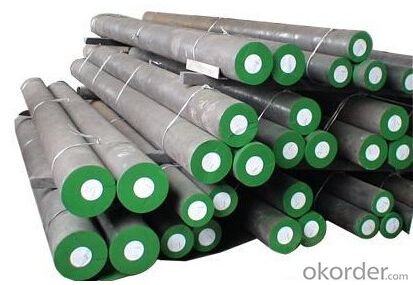
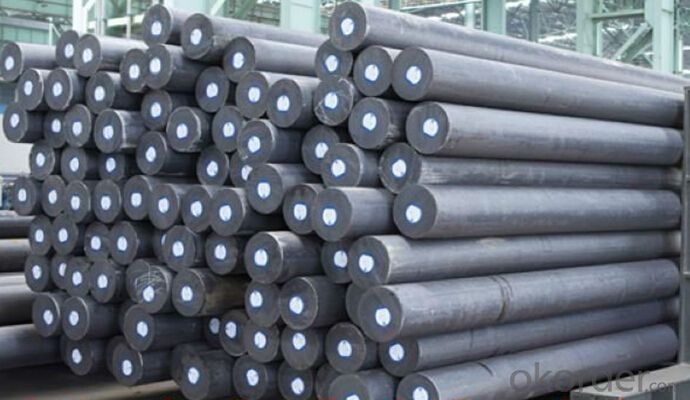
- Q:How are cobalt-based alloys used in dental applications?
- Cobalt-based alloys are commonly used in dental applications due to their excellent mechanical properties, corrosion resistance, and biocompatibility. They are used in dental prosthetics, such as crowns, bridges, and dentures, as well as in dental implants. These alloys provide high strength and durability, ensuring long-lasting dental restorations. Additionally, their biocompatibility ensures that they do not cause any adverse reactions in the oral environment.
- Q:Can special steel be machined easily?
- No, special steel is typically harder and tougher than standard steel, making it more difficult to machine.
- Q:What is the difference between special steel and regular steel?
- Special steel refers to steel that has been specially manufactured or treated to possess specific properties or characteristics that regular steel does not have. This can include higher strength, better corrosion resistance, improved ductility, or enhanced heat resistance. Regular steel, on the other hand, refers to the general classification of steel that is commonly produced and used in various applications without any specific modifications or unique attributes.
- Q:How does special steel perform in oil and gas applications?
- Due to its outstanding performance and superior properties, special steel is highly sought after and extensively used in oil and gas applications. The exceptional resistance to corrosion exhibited by special steel is crucial in environments where oil and gas are present, as it helps prevent equipment failure and guarantees the longevity and reliability of the components. In addition, special steel possesses remarkable strength and durability, making it capable of withstanding extreme conditions such as high pressure and temperature. This strength enables the steel to endure the demanding and harsh environments often encountered in oil and gas applications. Moreover, special steel retains its mechanical properties even at elevated temperatures, ensuring stability and reliability in these challenging conditions. Another notable advantage of special steel is its excellent weldability. This property allows for easy fabrication and assembly of components, reducing production time and costs. It also ensures the integrity of the structures and equipment used in oil and gas applications. Furthermore, special steel offers exceptional resistance to fatigue and wear, which are commonly encountered issues in oil and gas operations. The ability of special steel to withstand cyclic loading and abrasive conditions guarantees the longevity and reliability of the components, thereby reducing maintenance and replacement costs. Overall, special steel performs exceptionally well in oil and gas applications due to its corrosion resistance, high strength, durability, weldability, and resistance to fatigue and wear. These superior properties make it the preferred choice for critical components, ensuring the efficiency, safety, and reliability of oil and gas operations.
- Q:How is alloy steel used in the production of gears and shafts?
- Alloy steel is used in the production of gears and shafts due to its high strength and durability. By adding different alloying elements such as chromium, nickel, and molybdenum, the steel's properties can be enhanced to withstand heavy loads, high temperatures, and wear. This makes alloy steel ideal for manufacturing gears and shafts that need to transmit power, resist deformation, and maintain their integrity under demanding conditions.
- Q:How does special steel perform in high-temperature fatigue?
- Special steel is renowned for its outstanding performance in conditions of high-temperature fatigue. When exposed to elevated temperatures, special steel demonstrates qualities such as remarkable strength, exceptional resistance to creep, and superior thermal stability. These characteristics render it highly dependable and capable of enduring extended periods of exposure to extreme temperatures without significant deterioration in performance. One of the key factors contributing to special steel's exceptional performance in high-temperature fatigue is its distinct composition. Typically, it contains alloying elements like chromium, molybdenum, and vanadium, which enhance its strength at high temperatures and resistance to thermal fatigue. These alloying elements create stable carbides and nitrides that aid in preserving the material's structural integrity even under intense heat and cyclic loading. Furthermore, special steel undergoes specialized heat treatment procedures, such as quenching and tempering, to further enhance its properties in high-temperature fatigue. These treatments augment the material's microstructure, resulting in increased strength, toughness, and resistance to thermal fatigue. In conditions of high-temperature fatigue, special steel exhibits remarkable fatigue strength and durability, even when subjected to cyclic loading at elevated temperatures. Its high-temperature fatigue limit surpasses that of regular steel significantly, enabling it to withstand repetitive stress and strain without experiencing premature failure. This makes special steel an ideal choice for applications involving high-temperature environments, such as gas turbines, heat exchangers, and aerospace components. To conclude, special steel delivers exceptional performance in high-temperature fatigue conditions due to its unique composition, specialized heat treatment processes, and superior mechanical properties. Its high strength, resistance to creep, and thermal stability make it a reliable and long-lasting material for applications requiring prolonged exposure to extreme temperatures.
- Q:Can special steel be used in automotive engine components?
- Automotive engine components can indeed benefit from the utilization of special steel. Also referred to as alloy steel, special steel possesses enhanced properties, including increased strength, toughness, and heat resistance. These attributes make it highly suitable for the utilization in critical engine components that endure high temperatures, stress, and wear. Within the realm of automotive engines, special steel finds application in an array of components, such as crankshafts, camshafts, connecting rods, valves, and piston rings. These components encounter extreme conditions, including elevated temperatures, pressure, and rotational forces. Special steel confers the necessary strength and durability to withstand these conditions, consequently ensuring dependable engine performance and longevity. The incorporation of special steel within automotive engine components yields several advantages. Firstly, it heightens the strength and load-carrying capacity of the components, enabling them to handle greater power and torque outputs. Secondly, special steel bolsters the fatigue resistance and durability of the components, thereby diminishing the likelihood of failure and prolonging their service life. Lastly, special steel exhibits the ability to endure the high temperatures and thermal cycling experienced within the engine, thereby averting deformation and upholding dimensional stability. On the whole, the utilization of special steel in automotive engine components assumes paramount importance in the pursuit of attaining optimal performance, reliability, and longevity. It guarantees that the engine can endure the demanding conditions under which it operates, ultimately granting a smoother and more efficient driving experience.
- Q:What are the different corrosion testing methods used for special steel?
- There are several corrosion testing methods utilized for special steel to assess and evaluate its resistance against corrosion. Some of the commonly used techniques include: 1. Salt Spray Testing: This method involves subjecting the special steel to a controlled saltwater mist environment. The steel specimen is placed in a salt spray chamber, and the exposure duration can vary depending on the specific requirements. The resulting corrosion can be visually evaluated and compared against standard criteria. 2. Electrochemical Testing: Electrochemical techniques such as potentiodynamic polarization and electrochemical impedance spectroscopy (EIS) are widely used to study the corrosion behavior of special steel. These methods involve measuring the current and potential responses of the steel in various corrosive solutions to determine the corrosion rate and other electrochemical parameters. 3. Immersion Testing: In this method, the special steel is immersed in a specific corrosive solution for a predetermined period. The solution can be acidic, alkaline, or even simulated seawater depending on the intended application. The weight loss or surface damage caused by corrosion is then measured and compared to evaluate the steel's corrosion resistance. 4. Crevice Corrosion Testing: This technique focuses on evaluating the susceptibility of special steel to crevice corrosion, which occurs in confined spaces or gaps. A crevice is created between the steel specimen and another material, and a corrosive solution is introduced into the crevice. The severity of crevice corrosion is assessed by measuring the depth of attack or using electrochemical methods. 5. Intergranular Corrosion Testing: Special steel can be prone to intergranular corrosion, which occurs along the grain boundaries. Tests like the Strauss test or the Huey test are conducted to determine the steel's susceptibility to this form of corrosion. These tests involve immersing the steel in a corrosive solution at elevated temperatures and assessing the extent of intergranular attack. 6. Accelerated Testing: Accelerated corrosion testing methods aim to simulate long-term corrosion effects within a shorter time frame. Techniques like cyclic corrosion testing, which includes alternating exposure to various corrosive environments, can provide valuable insights into the steel's performance under realistic conditions in a shorter time period. It is important to note that the selection of the corrosion testing method depends on the specific requirements, intended application, and environmental factors that the special steel will be exposed to.
- Q:What are the different methods of improving the strength of special steel?
- There are several methods to enhance the strength of special steel, including alloying, heat treatment, and cold working. Alloying involves adding specific elements to the steel composition to enhance its properties, such as chromium for improved corrosion resistance or molybdenum for increased strength. Heat treatment techniques like quenching and tempering can alter the steel's microstructure, making it stronger and more durable. Cold working, which includes processes like rolling or forging, can also increase the strength of special steel by deforming its crystal structure and inducing strain hardening.
- Q:How is special steel used in the production of cutting inserts?
- Special steel is used in the production of cutting inserts due to its unique properties, such as high hardness, wear resistance, and heat resistance. These qualities make it effective for withstanding the high temperatures and forces involved in cutting operations. Special steel cutting inserts are designed to cut through various materials, including metals, plastics, and composites, with precision and efficiency, making them essential tools in industries such as manufacturing, automotive, and aerospace.
1. Manufacturer Overview |
|
|---|---|
| Location | |
| Year Established | |
| Annual Output Value | |
| Main Markets | |
| Company Certifications | |
2. Manufacturer Certificates |
|
|---|---|
| a) Certification Name | |
| Range | |
| Reference | |
| Validity Period | |
3. Manufacturer Capability |
|
|---|---|
| a)Trade Capacity | |
| Nearest Port | |
| Export Percentage | |
| No.of Employees in Trade Department | |
| Language Spoken: | |
| b)Factory Information | |
| Factory Size: | |
| No. of Production Lines | |
| Contract Manufacturing | |
| Product Price Range | |
Send your message to us
Grade AISI52100/JIS52100 Bearing Steel Round Bar
- Loading Port:
- Shanghai
- Payment Terms:
- TT OR LC
- Min Order Qty:
- 30 m.t
- Supply Capability:
- 10000 m.t/month
OKorder Service Pledge
OKorder Financial Service
Similar products
New products
Hot products
Hot Searches
Related keywords
